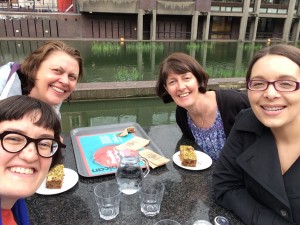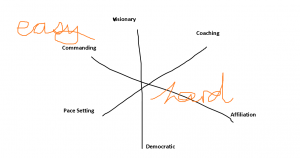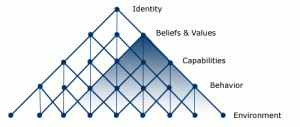
Mindfulness is recognised as an evidence based approach in health and social care. Mindfulness is about being rather than doing and offers space for being compassionate and not just the delivering care. After attending the King’s Fund course on compassion, mindfulness and leadership I was inspired to explore how students may be helped to develop an ability to be more reflective and reflexive through the application of mindfulness practice.
I have attended five of my six sessions with my coach who I met when she was a leader on the King’s Fund course.
As I anticipated, we have thought about how to integrate mindfully eating a raisin into our teaching of using all 5 senses, and adding mindful practices of mediation to the usual teaching of Egan’s SOLER. We have done some of this, but we have done other things too.
 |
 |
My challenge is not just introducing mindfulness to students, but also leading curriculum teams to engage with mindfulness. While not a new concept to colleagues; they may be more comfortable sticking with nursing skills textbooks. In coaching we have spent time thinking about how to engage both staff and students in this different way of thinking
For the sessions I have attended so far I have completed revalidation forms for the coach. In the first session we focused on contracting and goal setting as the coach listened and asked explorative questions. The model was familiar from counselling skills I have trained in as a psychologist. In the question about what went well I wrote ‘I felt invited to talk about my professional development as a lecturer who must lead teams to deliver education to university students…’
In the second session we set a specific goal to meet with a module team I lead to set goals and agree activities each person would take. In my second evaluation I was pleased to report that ‘We set a goal to meet with one of my teams and make progress. That has gone well.’ In the session the coach asked me to sit in one corner of the room and move my chair stage by stage to the other side of the room as I thought about what progress I needed to make, and to rehearse making the required moves. The activity was more experiential than I had expected. In this second session it felt less like counselling and more like a learning experience.
In the sessions we have looked at models such as a reflective exercise by The Performance Coach which suggests the different roles a leader can take.
Deeper reflection of these six skills led me to think that some of these skills were easy, and others more challenging. This has led on to some deeper thinking around VUCA and how to respond to problems that are
Volatile / Uncertain / Complex / Ambiguous.
Teaching applied social sciences to students in healthcare requires engaging with the VUCA when students would like to be told facts. This is kind of the crux of the challenge I work with on a daily basis. Some of the models my coach has introduced me to have been good for taking my thinking forward and welcome to colleagues I have shared them with. One of them is the logical levels model (adapted from Dilts)
Working with students over a three year programme, they often start with a focus on the environment the work is undertaken and behaviour with a focus on becoming capable. It is only later that students engage comfortable with beliefs, values and their own identity. As teachers of applied social science we encourage them to reach towards the higher logical levels. My coach encourages me to do so with the understanding that the solutions to lower levels often lie in the one (or two) above.
I still have one session left. I don’t think I have solved on my problems, but it has been good to have someone with me for part of the journey to bring mindfulness to the curriculum in the past year.


